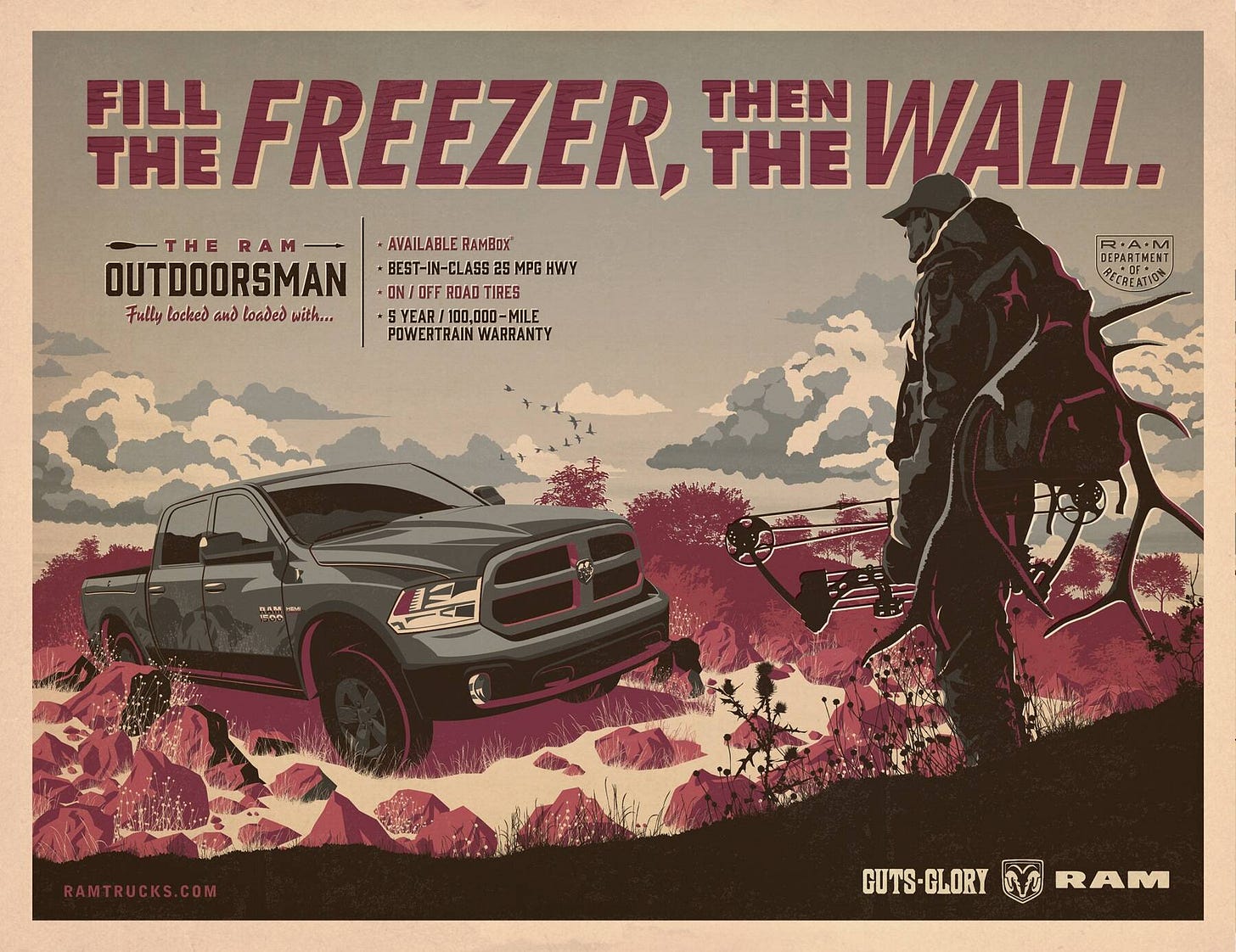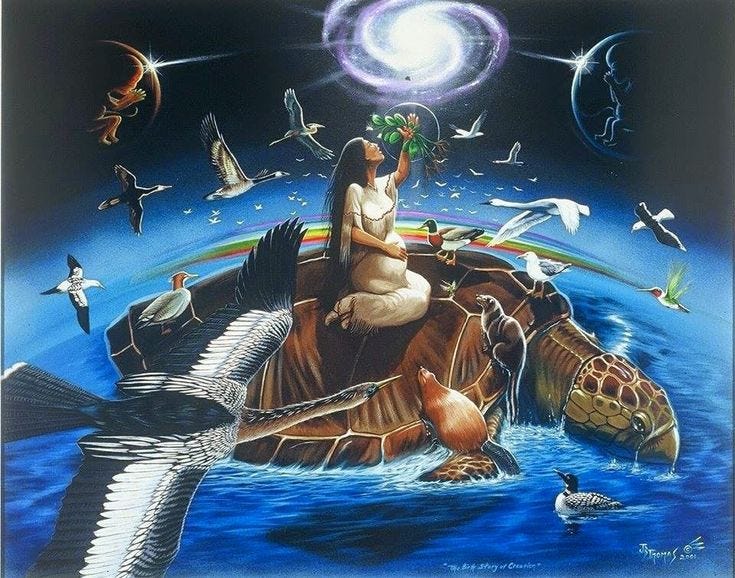I grew up with a father and mother who completed household chores in conjunction without any sort of hesitation for what should be done as a man or woman. I looked up to a father and mother who outwardly expressed a universal care and respect for other people. It opened my perspective on the world to see how their broad sweeping niceties added so much value to people’s lives.
I watched the Backyardigans, Wild Kratts, and later Star Trek: The Original Series. All three focused on validating wonder, curiosity, and hope for the world. I grew up in schools where that enthusiasm was propagated through song and dance.
My dad spent a lot of time communicating the sentimental importance of observing benign natural events, like sunsets and starry night skies.
I don’t think I anthropomorphized the outdoors into a particular gender, but I did have notions of associated warmth, grace, and mutualistic care associated with the outdoors.
In Skywoman Falling, these traits are appropriated into the human female form: “There is... tenderness in braiding the hair of someone you love...wiingashk [sweetgrass] waves in strands, long and shining like a woman's freshly- washed hair... When we braid sweetgrass, we are braiding the hair of Mother Earth. Showing her our loving attention... [and] gratitude for all she has given us" (Kimmerer 5).
The story of Skywoman Falling illustrates the active relationship between nature and humans.
Skywoman often gives thanks and provides for cultivation. After the muskrat dies to aid Skywoman, she: “sang in thanksgiving and began to dance, her feet caressing the earth...The land grew and grew" (Kimmerer 4).
When I was in school, there was a school program and push in the media for grassroots recycling efforts. As a six year old, these programs engaged the same wonderous processes for active and productive engagement with the world as science shows had. When I went on camping trips with the Cub Scouts, I retained a similarly mutualistic excitement about the outdoors through various gives and takes (packing out trash, or working hard to catch a fish to eat).
The purity of gratitude my younger self and Skywoman shared does not appear gendered. I did not feel more masculine in the killing of a fish than the identifying of a plant, or the cooking of a meal. It was obvious nature was much grander than me, so I didn’t feel any sense of dominating it.
As I grew up more in San Diego, I saw littering and waste everywhere. I saw my scout friends starting to look at chewing tobacco and gun ads. There is a call to return to colonial masculinity in these ads. They usually have an imposing man in outdoors gear taking up most of the foreground with armament, a dead animal, and a largely monochromatic background. The man was always ready to “tame the jungle” with the help of a given product. This was not the idea of mutualism that I had grown up around.
Adam and Eve had a negative relationship with the land (Kimmerer 9). There was fruit procured from the top down, followed by embellishment, temptation, and finally banishment. The land was a productive gift that had to be taken away if the humans gained self- consciousness. Coexisting was not a possibility. In this way, the land became a product and then opponent of man. A man turned into someone who can reassert dominance over the land.
The wonderous interaction of Skywoman feels challenging in western society because it is effectively cooperation with the enemy. We tolerate nature to the extent it exists in plots and rows; where it is in active display of submission.
It is nice to feel in control. The digging in of heels in political thought is often expressed as an attempt to name and control a dragon that may not be benevolent or controllable. Opposers to environmental policies, for instance, often express feeling imposed upon by them. By allowing nature room for animation, they fear a personal economic or identity attack. Coexisting is not a possibility.
The land is existentially terrifying. For one it is both an other and unknown. For two, it is part of an inevitable circulation of life and death.
In order for masculinity and the earth to coexist, we must resist our internalization of the land as adversarial and repair our broken relationship with it through small acts of wonder and mutualistic joy. It would do us good to mimic Skywoman’s loving first contact with the land.
Word Count: 750


